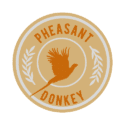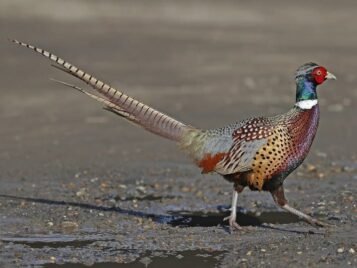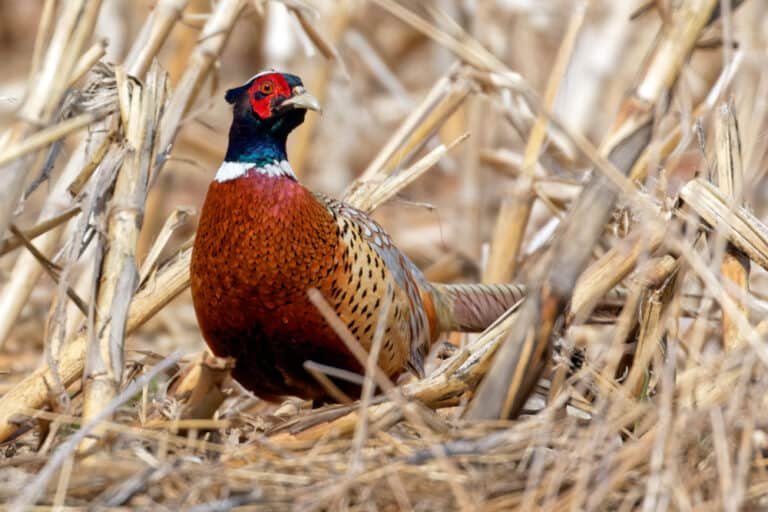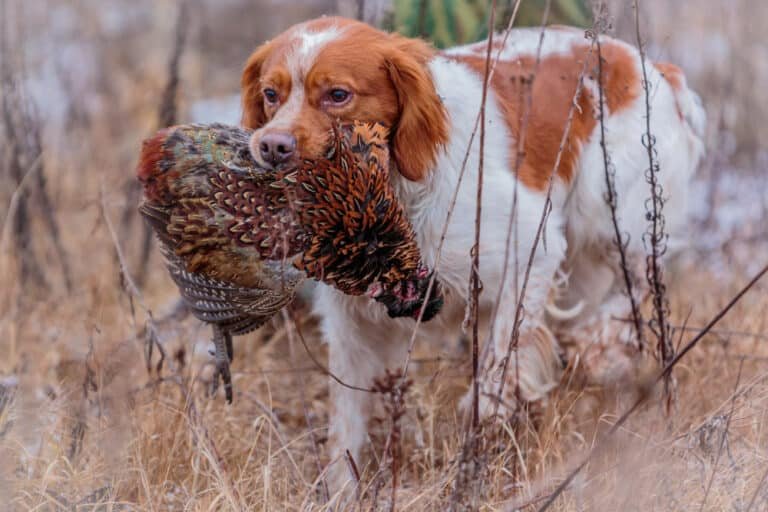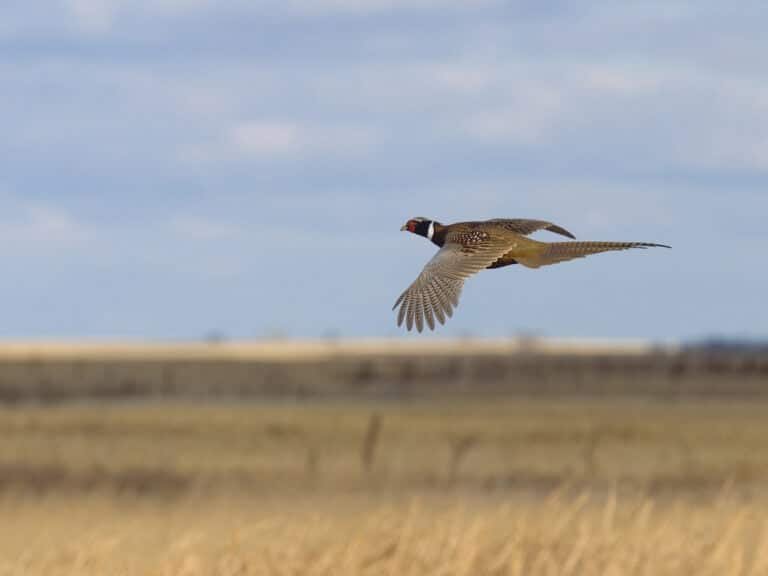Ringneck Pheasant Hunting: Your Ultimate Guide – 2024 Success
Welcome, fellow nature enthusiasts, to the captivating world of the ringneck pheasant! Originating from Asia, these elegant creatures have been introduced to various parts of the world. Renowned for their vibrant colors, ringneck pheasants have become a beloved sight in many continents.
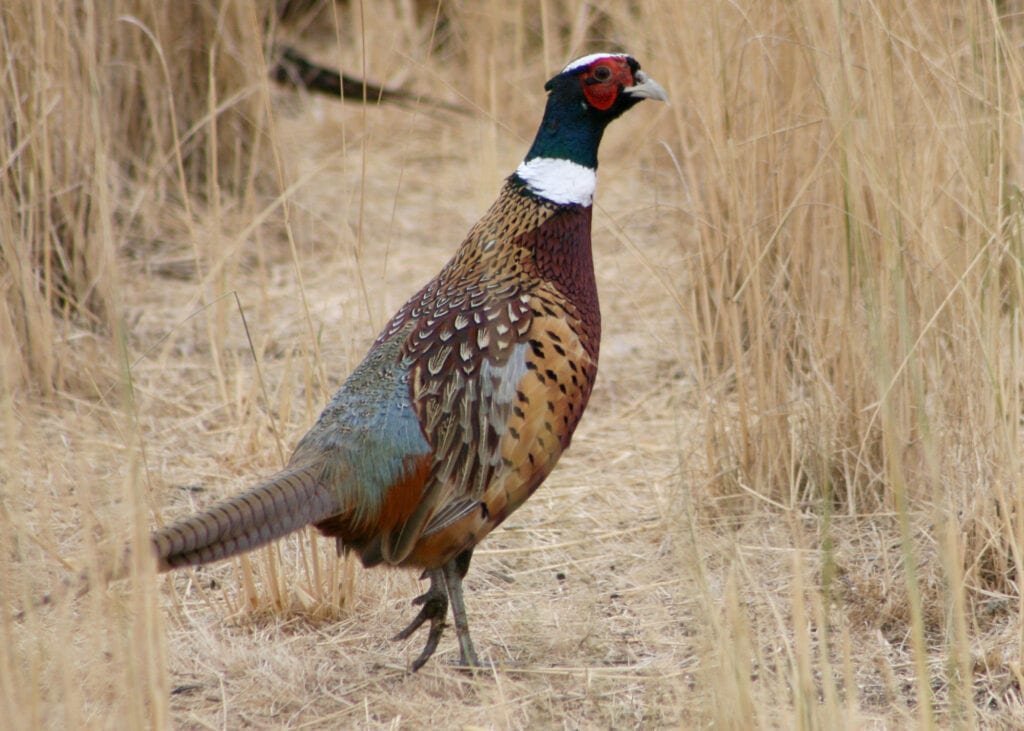
Discover the unique beauty of ringneck pheasants. Males display elongated tail feathers in stunning gold, green, copper, and crimson. With their mottled brown feathers, females blend seamlessly into their surroundings, evading predators.
These birds adapt to diverse environments, thriving in grasslands, agricultural fields, woodlands near water, and brushy areas. Let’s explore their life cycle and behaviors.
Courtship Behavior and Mating Rituals
The courtship rituals of ringneck pheasants are a captivating display of natural behavior. Male pheasants, known as roosters, engage in elaborate displays to attract females. The most notable is their resonant, booming call, a combination of loud cackles and crowing, which serves multiple purposes: attracting females, establishing their presence, and marking their territory.
In addition to vocal displays, males showcase a behavior known as “tidbitting.” This involves picking up and dropping food while emitting soft clucking noises, demonstrating their prowess in finding food and their potential as a mate. This ritual is a critical part of mating, indicating the male’s ability to provide and care for offspring.
The males also flaunt their vibrant plumage in a visual display, fanning their tail feathers and strutting around to showcase their physical attributes. These courtship rituals are crucial for mate selection, and the most impressive males often attract multiple females.
Nesting Habits and Incubation Period
Female ringneck pheasants are responsible for nesting and incubation. They select well-hidden spots in dense vegetation to build their nests, using leaves, grasses, and feathers to create a secure and comfortable environment for their eggs. The location is typically chosen for its seclusion and protection from predators.
The incubation period for ringneck pheasant eggs ranges from 23 to 29 days. During this time, the female diligently tends to her eggs, rarely leaving the nest except for short periods to feed and hydrate. This dedication ensures the eggs are kept at a consistent temperature and protected from potential threats.
Growth Stages of Chicks
Ringneck pheasant chicks are precocial, relatively mature, and mobile shortly after hatching. Covered in downy feathers for insulation, these chicks are active and can leave the nest within hours of hatching to begin foraging under the watchful eye of their mother.
Within the first two weeks, the chicks develop primary wing feathers, an essential adaptation for short flights and evading predators. This early development of flight capabilities is crucial for their survival in the wild.
By 12 to 14 weeks, the young pheasants reach maturity. During this growth period, they learn essential skills for survival, such as foraging for food and recognizing and responding to threats. The mother plays a pivotal role in teaching and protecting her chicks during this vulnerable stage.
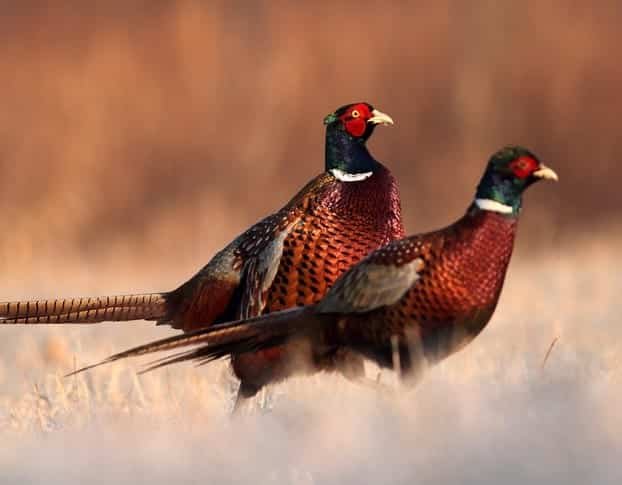
Feeding Habits and Diet
Ringneck pheasants boast an omnivorous diet, which is both varied and adaptable. Grains, such as corn, wheat, and barley, form a significant portion of their diet. They also feed on a variety of seeds, particularly those of weeds and grasses like ragweed and millet. Insects, including grasshoppers, crickets, and beetles, are crucial for protein, especially during the breeding season.
In the wild, these birds exhibit flexibility in their food choices according to seasonal availability. Spring and summer see an increase in insect consumption, vital for egg production and chick growth. In contrast, fall and winter diets shift to grains and seeds, providing necessary fat reserves to survive colder temperatures. This dietary adaptability is a key factor in their survival across various habitats.
Range and Distribution
Originally native to the diverse landscapes of East Asia, ringneck pheasants have been successfully introduced to various parts of the world. In North America and Europe, they have found habitats that closely mirror their ancestral homes, leading to thriving populations. In these regions, they are commonly found in agricultural fields, grasslands, and forest edges.
However, their success in establishing populations in new territories has varied. In some areas, inadequate habitat and food sources, along with competition from native species, have limited their proliferation. Understanding and replicating the conditions of their native habitat has been crucial in successful introductions.
Behavioral Adaptations
Ringneck pheasants are masters of camouflage, with plumage that blends into their environment. This camouflaging ability is crucial for evading predators and successful nesting. Seasonally, their roosting habits change: in warmer months, they roost in tall grass or thickets near water, while in winter, they seek denser cover for protection against the elements and predators.
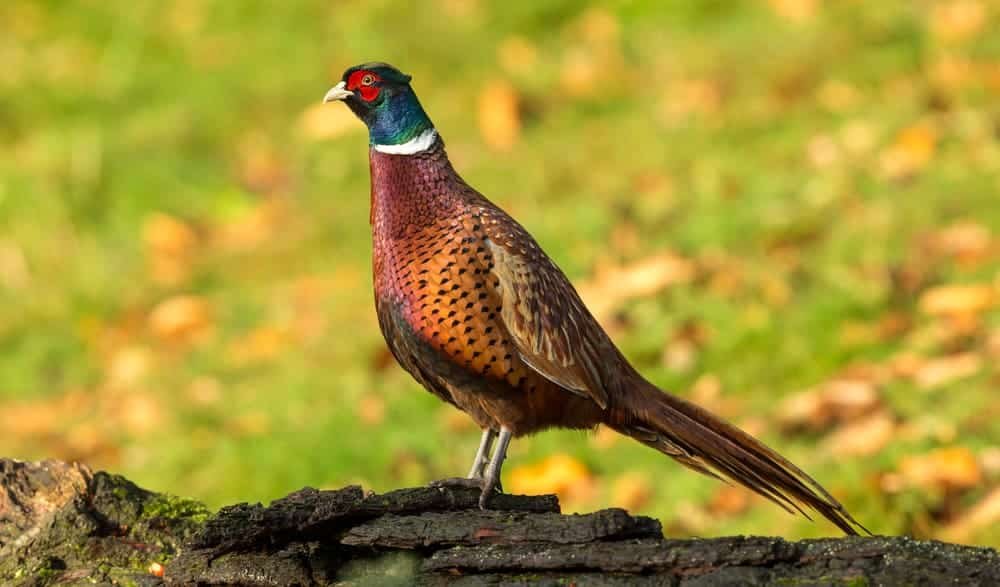
Interesting Facts – Ringneck Pheasant
The male ringneck pheasant is renowned for its vibrant, iridescent plumage and elongated tail feathers. These features play a key role in courtship displays. Their calls, a distinctive feature, serve as a means of communication and territorial assertion. Surprisingly agile flyers they can burst into rapid flight, reaching speeds of up to 60 mph, usually to escape predators.
Cultural Significance
Ringneck pheasants hold significant value in many cultures. In traditional hunting societies, they represent skill and the beauty of the natural world. Their depiction in art and folklore spans continents, symbolizing everything from beauty and good fortune in Asia to adaptability and resilience in Native American stories.
Threats
Habitat loss due to agricultural expansion and urbanization is a major threat to ringneck pheasants. This, combined with increased predation and environmental changes, challenges their survival. Conservation efforts focus on habitat creation, sustainable hunting practices, and public awareness to mitigate these threats.
Conclusion
The ringneck pheasant embodies the splendor and complexity of the natural world. Their ability to adapt and thrive in diverse environments is a testament to their resilience. As symbols of tradition and beauty, their conservation is vital. By supporting habitat restoration and responsible hunting practices, we can ensure the survival of these magnificent birds for future generations to appreciate and enjoy.
